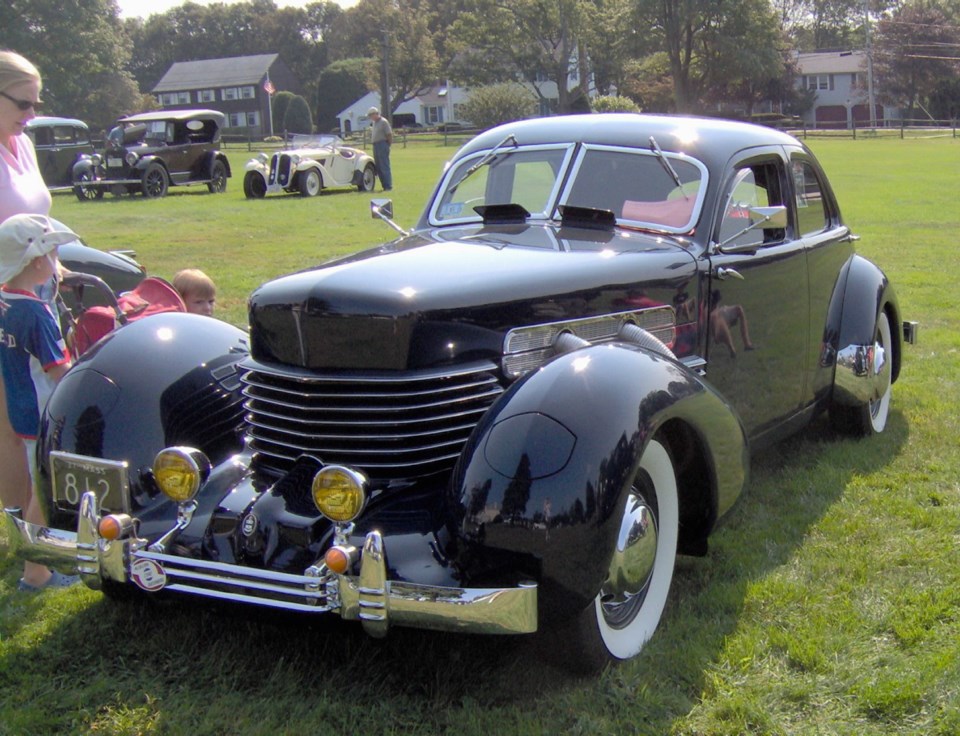Errett Lobban Cord was born in 1894 in Warrensburg, Missouri, just as the North American auto industry was emerging. He came of age as it began to blossom, and entered the business as a salesman. By the early 1920s ,the ambitious and confident young Cord was selling Moon cars so successfully in Chicago he was earning a reputed $30,000 a year.
But Cord had aspirations beyond just selling cars, and when an opportunity came for a principal position with Auburn Automobile Co. in Auburn, Indiana, he left Moon in 1924 to join the troubled company. When he arrived he found a despondent staff and an unsold inventory of nearly 500 cars.
Knowing the importance of style, Cord had them repainted in bright, appealing colours and quickly sold the whole batch. His initial success soon earned him control of the company, which he proceeded to turn around.
But the entrepreneurial Cord was thinking of something much bigger. This led him to begin assembling his Cord Corp. by acquiring luxury car maker Duesenberg Motor Co. of Indianapolis in 1926.
With the moderately priced Auburn and the expensive Duesenberg, Cord wanted a car to fill the huge price gap between them. The result was the new 1929 Cord L-29. To keep its contours low, Cord stipulated front-wheel drive and engaged leadingfront-wheel drive expert Cornelius Van Ranst to engineer it.
The L-29 made its mark by being the first American front-wheel drive car to go into series production. The sleek silhouette and long hood attracted many coach builders and won several awards, including the 1930 Monaco Concours d’Elegance. Cords became popular with Hollywood celebrities.
The Depression caused the L-29 to be discontinued in December 1931, but Cord had not been idle on the acquisition front. In addition to Auburn and Duesenberg, the Cord Corp. now included Lycoming Engine Co., Columbia Axle Co., Checker Cab Manufacturing and Century Airlines. E.L. now wanted a dashing new car to enhance the company’s image.
Following months of rumours, in January 1934, E.L. announced that Cord would produce a new car “of radically advanced design, engineering and performance.”
Following delays, early in 1935 Cord finally set his engineers and stylist Gordon Buehrig to work on the new car. With an all-out effort, they completed a prototype by August. E.L. was delighted.
Originally thinking it might be called a Duesenberg, he decided it would be a Cord and ordered production models ready for the 1935 fall motor shows, a mere 15 weeks away.
The dedicated staff met this extremely short deadline by, as one exhausted worker recalls, almost literally “banging together” the cars. Although the American Automobile Manufacturers Association required at least 100 cars to qualify for display as a production model, E.L. blithely ignored that. The number of Cords actually ready was estimated to be as low as 11.
The Cord 810 was a sensation. Buehrig’s stunningly styled body incorporated the best contemporary features and some daring new ones. The long hood’s unadorned yet elegant shape somewhat resembled a coffin, earning the Cord its “coffin nose” nickname. The simple but effective Art Deco grille had just seven horizontal bars running completely around the front end from door to door.
The voluptuously rounded pontoon fenders housed industry-pioneering hidden pop-up headlamps. Door hinges were concealed, running boards were eliminated and the interior featured step-down design. Fastback rear styling finished off the car.
The Cord also had some unusual engineering features. The Lycoming side-valve, 4.7 litre (289 cu in.) 125 horsepower V-8 drove the front wheels through a four-speed pre-selector transmission. Unit construction was used from the cowl back and the wheelbase was a generous 3,175 mm (125 in.).
The Cord 810 was hailed by the public, and although buyers were promised cars by Christmas, it was April 1936 before restive customers finally began receiving them.
When they did arrive, the results of their rushed development soon surfaced. There were engine overheating problems and the transmission often didn’t stay in gear. This, plus a high price, resulted in the sale of only 1,629 1936 Cords.
Supercharging was made optional for the 1937 Cord 812, which raised horsepower to a claimed 170. Despite the addition of two new series, only 1,278 1937 models sold by the time production ceased. The body dies were later used for both Hupmobiles and Grahams.
Although Cords had been manufactured only from 1929 to 1937 with a hiatus in between, there were revered way beyond their production numbers. And in spite of some advanced engineering, they were better remembered for their styling than their technology.
E.L. Cord went on to other endeavours. He died in 1974, but his legacy lives on in the beautiful cars he produced. They have a cherished place in automotive history and are valuable collectibles today.



